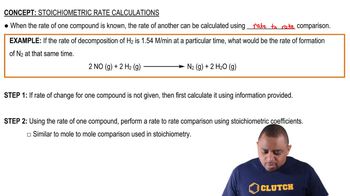The natural abundance of 3He is 0.000137%. (a) How many protons, neutrons, and electrons are in an atom of 3He?
A cube of gold that is 1.00 cm on a side has a mass of 19.3 g. A single gold atom has a mass of 197.0 u. (c) What assumptions did you make in arriving at your answer for part (b)?
 Verified step by step guidance
Verified step by step guidanceKey Concepts
Density

Molar Mass and Avogadro's Number

Assumptions in Calculations

The natural abundance of 3He is 0.000137%. (b) Based on the sum of the masses of their subatomic particles, which is expected to be more massive, an atom of 3He or an atom of 3H (which is also called tritium)?
The natural abundance of 3He is 0.000137%. (c) Based on your answer to part (b), what would need to be the precision of a mass spectrometer that is able to differentiate between peaks that are due to 3He+ and 3H+?
A cube of gold that is 1.00 cm on a side has a mass of 19.3 g. A single gold atom has a mass of 197.0 u. (a) How many gold atoms are in the cube?
A cube of gold that is 1.00 cm on a side has a mass of 19.3 g. A single gold atom has a mass of 197.0 u. (b) From the information given, estimate the diameter in Å of a single gold atom.
The diameter of a rubidium atom is 495 pm We will consider two different ways of placing the atoms on a surface. In arrangement A, all the atoms are lined up with one another to form a square grid. Arrangement B is called a close-packed arrangement because the atoms sit in the 'depressions' formed by the previous row of atoms: (a) Using arrangement A, how many Rb atoms could be placed on a square surface that is 1.0 cm on a side?
